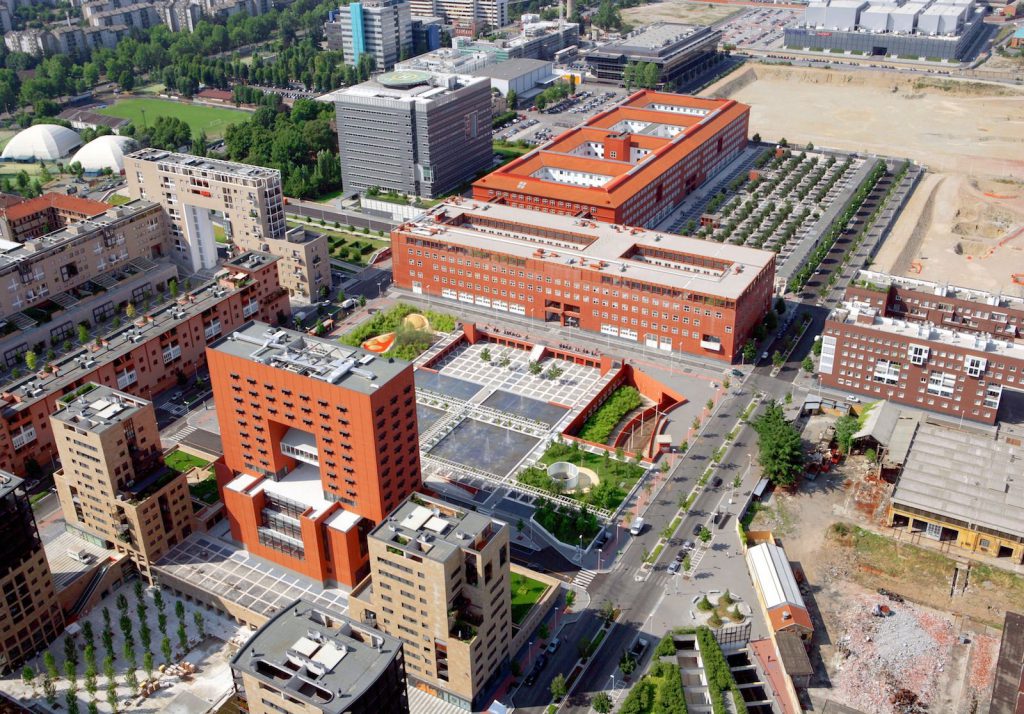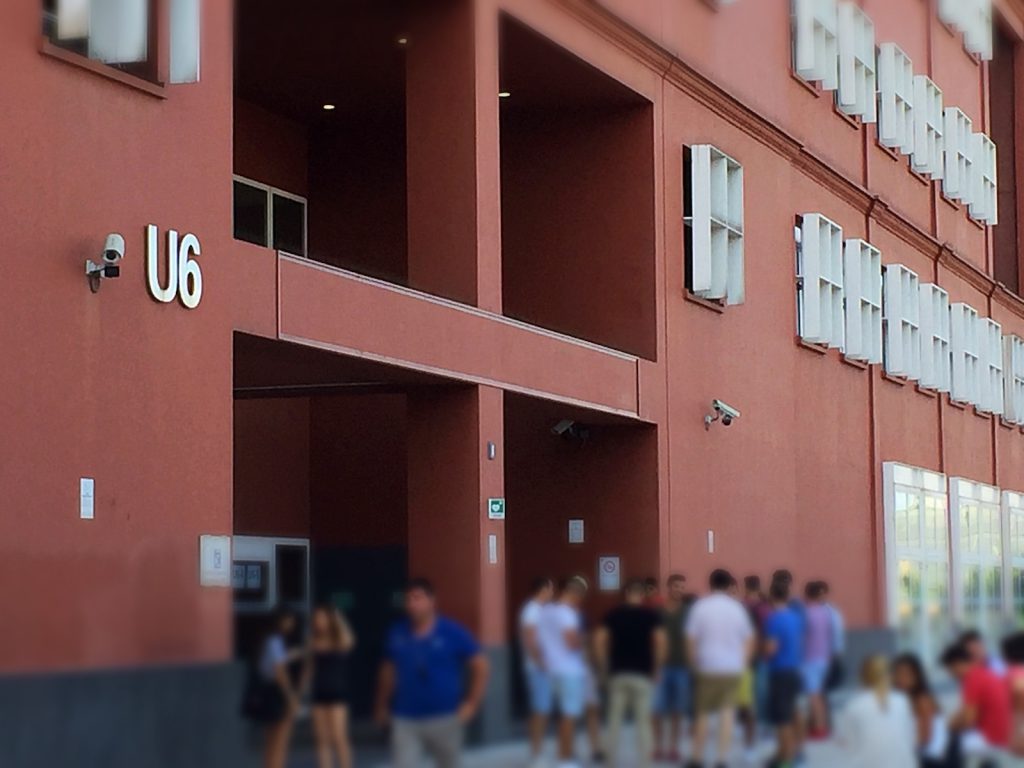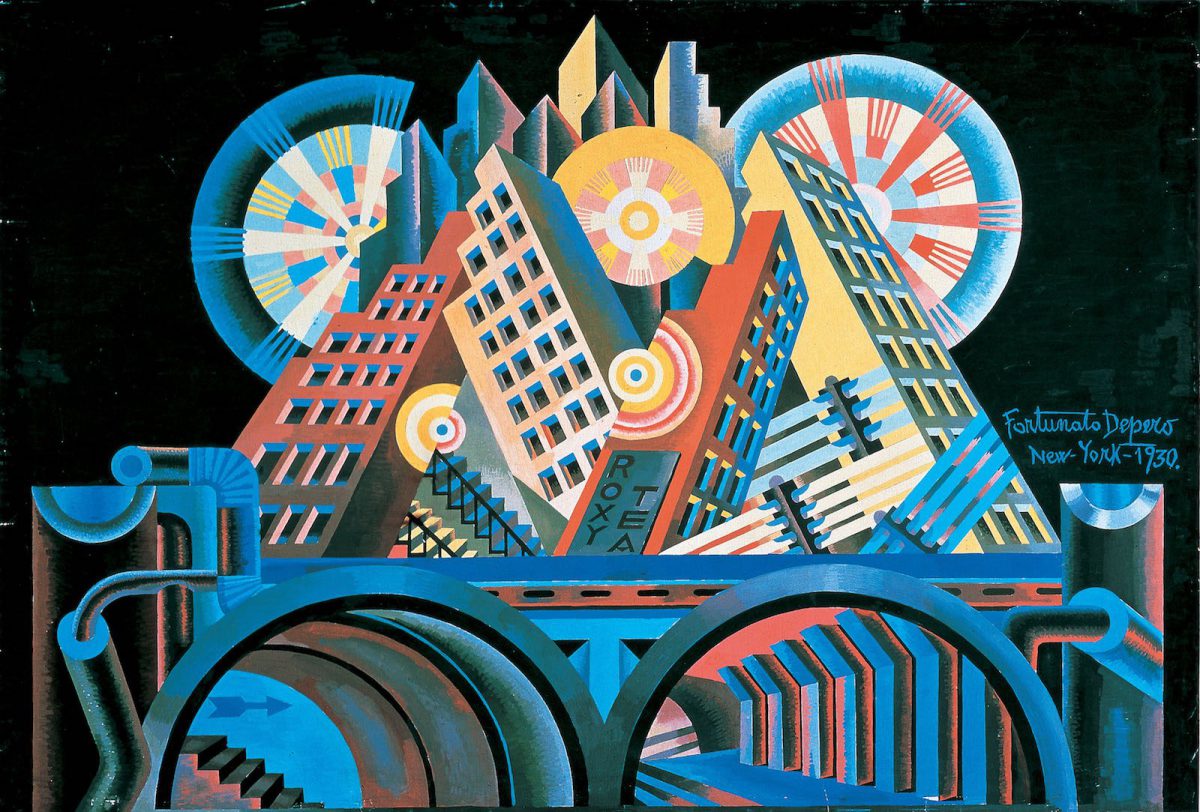Italian text is followed by English
L’Università degli Studi Milano-Bicocca, fondata nel 1998, nasce con l’obiettivo di fare della ricerca il fondamento strategico di tutta l’attività istituzionale. Ricerca intesa come ampliamento della conoscenza e qualificazione dell’attività formativa, come strumento di relazione con il territorio e come contributo allo sviluppo del sistema produttivo.
L’Ateneo ha stabili e intensi rapporti con il mondo imprenditoriale e dedica particolare attenzione alla realtà territoriale in cui è inserito, privilegiando, al tempo stesso, anche la dimensione internazionale.

Bicocca è un ateneo multidisciplinare con un’offerta didattica articolata in 66 corsi di studio suddivisi in sette aree disciplinari: economico-statistica, giuridica, medica, psicologica, sociologica, scientifica e della formazione, a cui si aggiungono 17 Corsi di dottorato coordinati da un’unica Scuola e 37 Scuole di Specializzazione. L’università ha anche un secondo polo, a Monza, dove ha sede la Facoltà di Medicina e Chirurgia. Nell’anno accademico 2015/2016 gli studenti iscritti all’Università Bicocca sono stati 32.549, di cui il 61,1% ragazze e il 5,8% di provenienza straniera.
Il Campus sorge nell’omonimo quartiere nel quadrante nord-est del capoluogo milanese, un tempo sede di grandi industrie come la Breda e la Pirelli. Un ampio piano di riqualificazione urbana, avviato intorno al 1986 e coordinato dall’architetto Vittorio Gregotti, ha riconvertito l’area trasformandola in un nuovo quartiere di servizi e “sapere”, del quale l’Università è diventata il centro ideale.

Nel contesto territoriale il ruolo dell’Università non si esprime solo nella funzione istituzionale di agenzia formativa e divulgatrice del sapere, ma anche come centro attivo nell’economia, che si concretizza nella valorizzazione e diffusione delle conoscenze prodotte dalla ricerca e nelle iniziative di trasferimento tecnologico.
È inoltre interessante e rappresentativo il ruolo trainante che la nuova Università milanese ha assunto negli anni nelle trasformazioni del quartiere, che riguardano la vivibilità, la creazione di spazi di incontro sociale e culturale. Non a caso l’immagine del quartiere ha finito per identificarsi sempre più con l’Università, che ne costituisce la “nuova” anima.
Il Campus è costituito da 25 moderni edifici che si estendono su una superficie totale di 290.000 mq, distribuiti tra il polo cittadino e il polo Biomedico di Monza. A disposizione degli studenti ci sono 207 aule cablate e attrezzate, 20 mila posti aula di cui 300 per disabili, quasi duemila postazioni informatiche, la copertura WiFi integrale, decine di spazi studio attrezzati, biblioteche, residenze, mense e servizi di trasporto interni (navetta gratuita e una flotta di biciclette per spostarsi tra gli edifici).
Nel ranking Times Higher Education 2016, dedicato alle cento università con meno di 50 anni, l’Ateneo si è classificato al 51° posto nel mondo, secondo in Italia; nella classifica “Times Higher Education World University Rankings 2014-2015”, Milano-Bicocca si piazza invece terza tra le italiane e 247a a livello mondiale, cioè nel primo 1,5%.

Una location di prestigio e di altissimo profilo, insomma, per questo nostro WordCamp, un evento che speriamo torni ad essere un appuntamento fisso per la Community italiana e che possa crescere e prosperare anche proprio grazie a sinergie produttive sia con il contesto accademico che con quello tecnologico e professionale urbano, regionale e nazionale.
Lo spirito alla base della Community di WordPress è la condivisione della conoscenza e la partecipazione per la crescita collettiva, principi che si sposano egregiamente con gli obiettivi dell’Università degli Studi Milano-Bicocca.
Cogliamo anche questa occasione per ringraziare formalmente sia la Professoressa Daniela Micucci e il Dipartimento di Informatica Sistemistica e Comunicazione (DISCo), sia il Rettorato dell’Università degli Studi Milano-Bicocca, per il sostegno e la collaborazione.
Per approfondimenti: Università degli Studi di Milano-Bicocca
English
WCMIL 2016 – The venue: Università degli Studi Milano-Bicocca
The Università degli Studi Milano-Bicocca, was founded in 1998 with the objective of making research the strategic basis of all institutional activities. Research, here, is considered as the extension of knowledge and the qualification of all educational activities; as the instrument of the relationship with the territory and as the contribution to the development of the local productive system.
The school has stable and intense relationships with the entrepreneurial landscape and gives special attention to the local ecosystem in which it’s embedded, while cherishing, at the same time, also its international dimension.
Bicocca is a multidisciplinary University, with a teaching curriculum articulated in 66 different majors, grouped in 7 disciplinary areas: economics and statistics, legal, scientific, medical, sociological, psychological and pedagogical. The offer is completed with 17 PHD courses, coordinated by a single School and 37 Specialization Schools. The University has also a second campus in Monza, where the School of Medicine and Surgery is located. Uni Bicocca’s registered students for the 2015/2016 academic year were 32.549, of which 61,1% girls, and 5,8% foreign.
The campus is located in the north-east area of Milano, in the neighborhood that bears the same name and that was once home to great industries, such as Breda and Pirelli. A wide urban requalification project began in 1986 and coordinated by Architect Vittorio Gregotti has turned the area in a new, vital district of services and “knowledge”, of which the University has become the ideal heart.
From a territorial perspective, the role of Università Milano-Bicocca is not only one of institutional educator and dispenser of knowledge, but that of active center for the local economy as well, a role that gets actualized in the valorization and in the diffusion of the know-how produced by research and in the activities that stem from the transfer of technology.
It is also interesting to note how the new Milanese University has become a catalyst for change in the neighborhood, in particular propelling the liveability, the liveliness and the growth of opportunities for social and cultural interactions. So it is not a case that the perceived image of the district has more and more become one that fully identifies with the University, as it represents its beating heart.
The campus is composed of 25 modern buildings, spreading on a total surface of 290.000 square meters between the Milano and the Monza locations. Students’ facilities include 207 cabled and equipped classrooms, 20.000 students’ seats, of which 300 geared for disabled, almost 2000 computer stations, full WiFi, dozens of study areas, libraries, residences, cafeterias and internal transportation services (a free shuttle and a fleet of bicycles to commute between buildings).
Times Higher Education 2016, which focuses on the top 100 universities younger than 50, Uni Bicocca has ranked 51st in the world, and 2nd in Italy; and Times Higher Education World University Rankings 2014-2015 placed it 3rd in Italy, and 247th in the world. That’s in the top 1,5%.
So, thanks to Uni Bicocca, we have an excellent and high profile location for our WordCamp, an event that we hope will return to be a set feature in the WordPress Italian Community landscape, and that we hope will grow and prosper, especially by virtue of the productive synergies that can be woven with both the academic, the technological, the industrial and the professional contexts, both regionally and nationally. The spirit at the base of the WordPress Community is nurtured in the sharing of knowledge and the participation for collective growth, principles that are perfectly coupled with the ones on which Università Milano-Bicocca is rooted.
Finally, we wish to take this opportunity to formally thank both Professor Daniela Micucci and the Dipartimento di Informatica Sistemistica e Comunicazione (DISCo), as well as the Dean of the Università degli Studi di Milano-Bicocca for their precious support and collaboration.
For more information: Università degli Studi di Milano-Bicocca.
Image credits: Fortunato Depero, Grattacieli e Tunnel, 1930
